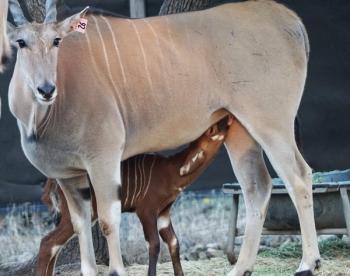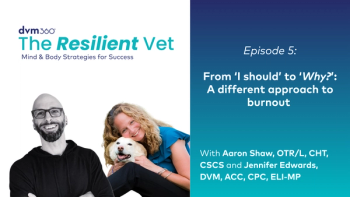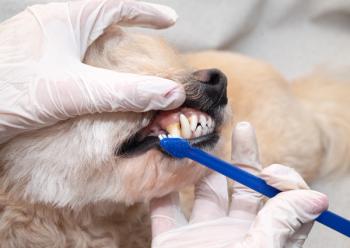
- June 2017
- Volume 2
- Issue 3
WVC 2017: End-of-Life Care at Its Best - Part 2
Here's Part 2 of our conversation with Dani McVety, DVM, and Mary Gardner, DVM, founders of Lap of Love Veterinary Hospice.
In the April issue of American VeterinarianTM, we introduced Dani McVety, DVM, and Mary Gardner, DVM, founders of Lap of Love Veterinary Hospice. We spoke with these trailblazers at the 2017 Western Veterinary Conference in Las Vegas about hospice care and the human—animal bond, convenience euthanasia, and the veterinarians who are part of their organization.
We conclude our conversation in this issue with a discussion of compassion in euthanasia, including ways to help clients through the decision-making process and how to be truly present with them during the procedure itself.
How do you help clients whose pet is very ill and the end is near?
Dani McVety, DVM: Going through the decision-making process with families is probably one of the more important things we do. One of the best things we can do for people to set them up for success through the end-of-life process is really to make them understand that there’s no one perfect moment in time when it’s the right decision to make.
The way that we explain it is to tell the client that there’s a subjective time period when euthanasia is a good decision. It may not be your only decision, but it’s a good decision. Before that time, we’re going to refuse to euthanize as veterinarians because we have to be okay with the decision as well. After that period, we’re going to insist on euthanizing because there’s sustained suffering going on.
As a former emergency clinician, this is where so many euthanasias occur, in the emergency room during sustained suffering. But the subjective period of time is when people need to know that they have the right to come to us with that decision and we get to help them through that decision-making process. I never say, “You are making the right decision.” Instead, it’s, “We are making the best decision together.” It’s not on them, I can separate the grief and the guilt and help them through the guilt part, and the grief is going to be there no matter what. But we can take the guilt away as much as possible at the beginning so that through the decision-making process they don’t feel that it’s 100% on their back and their choice to make.
Mary Gardner, DVM: There are a few other short and sweet things I like to say because the family just wants to be reassured that they’re making the right decision. I always like to say, “It’s better a week too soon than a day too late.” Or if it’s a dog that’s still eating and happy and wagging its tail but mobility issues are so bad, I tell them that’s how I want to go. I want to go on a good day when I’m still looking good and eating and happy and understanding that everybody there loves me so much.
DM: People always say, “You know, I want them to die nat- urally.” We respond with, “Gosh, our 18-year-old dogs aren’t natural anymore” or “Our 20-year-old cats aren’t natural.” Nature didn’t necessarily mean for them to get this old, and that’s okay, there’s nothing wrong with wanting that by any means. The other thing they say is, “I just want them to go to sleep and not wake back up,” and I say, “That’s what euthanasia is. They go to sleep and don’t wake back up.”
Many people are uncomfortable with other people's grief. How would you advise veterinarians who want to push through the discomfort and be "present" for their clients during the euthanasia procedure?
DM: Being present with someone’s grief is really such an art form. When I first started doing in-home end-of-life care, I felt a bit uncomfortable until I realized how to really be present with somebody. I had a family tell me once when I came back for a second pet, “You know, your presence with us last time was so important. You just being here with us made everything better.”
I remember thinking back to that earlier appointment and remembering that I didn’t say anything; I was just there. But I was present, I was with them. I wasn’t trying to tell them that everything is okay, that their pet was no longer in pain. There’s nothing you can say at that moment that will take their grief away—their grief is their own journey. I think that was one of the cases where I learned how to be present and be silent and what that means.
MG: Honoring silence is huge, although it’s kind of a problem sometimes with me being a chatty Cathy. I think we’re able to help clients with their guilt, but they do have to go through their grief. I think a lot of veterinarians have trouble breaking from the nice puppy/kitten appointment to maybe diagnosing a disease and then going to a euthanasia, or maybe a couple in a row. But I think you have to be present during every single appointment, particularly the euthanasias. We may perform 4 or 5 euthanasias a day, but that appointment, for that person or that family, is the only important thing about their day, so you have to be present.
DM: If there’s anything that we can probably share with other veterinarians, it’s that one statement: “Honor the silence.”
So, it's about focusing all your attention on that one client or family?
DM: Definitely. When clients ask, “How many have you seen today?” we say, “One, just this one.” Then we go to another one and when the client asks, “How many have you seen today?” I say, “I’m right here. This is the only one I’m seeing today.” It literally is just about that 1 pet, that 1 moment, that 1 time. We don’t even bring a cellphone into the home. It is one of the more peaceful times for me, even in my daily life.
MG: We like to go alone, too. I don’t bring a technician because I don’t want somebody else interfering with that moment.
What about humor? Does humor have any place in end-of-life care settings?
MG: A lot of people ask if our appointments are full of dread and grief. The answer is no. There is definitely a place for humor in end-of-life care, but it has to be done with the right tone and with the right family—it won’t work with every client. Most of my appointments end or have a portion where we’re laughing about the situation or laughing about what the pet brought to that home or just the snot dripping out of the pet’s nose, and that’s okay! I think humor alleviates some of the pressure, the guilt, the grief, and the awkwardness of the appointment because clients don’t know what to expect. They’re saying goodbye to the most important furry thing in their world. So, I think if you’re able to bring humor, it’s absolutely appropriate.
DM: We all have our little things that we say. For me, sometimes it’s walking into a stranger’s home for the first time and saying, “Hi, how are you?” And of course, they say, “Oh, awful!” and I respond, “I know, stupid question, isn’t it?” And they’ll smile a little bit. Or if I’m helping a pet that belonged to the wife before she met the husband, I’ll look at the husband and say, “You’re going to move up in the world now.”
These are little things that will make people kind of just smile. It’s not about laughing; it’s really about bringing to life what’s actually happening because we’re there to help people through the process. They don’t have the words sometimes or the experience to see the big picture because they’re so in that moment and in their grief. So, we can add little tips like that. Even when we give the first injection we might say something like, “He might tell me his opinion on this.”
MG: I like it when the pet is giving me kisses. I’m like, “That is the best hot garbage breath I’ve smelled,” and the client is always like, “Oh yes, it’s the worst!” It’s just to lighten the mood a little bit.
DM: If a pet gets a little bit riled up, I love saying, “This must be how he lived, isn’t it? This must be very much in line with how Max is,” and they’re always like, “Yes, this is exactly how he is always.” Any type of humor can help make the situation easier, but make sure it’s delivered in a very compassionate tone. It elevates the feeling of the whole appointment.
You've talked about some of the things you say to clients in euthanasia situations. What should veterinarians not say to a client who is considering euthanasia for his or her pet?
DM: Probably one of the worst things you can say to a client who is going through the decision-making process, and even after we’ve made the decision, is anything that puts that decision and/or the guilt on them. For example, “Call me when you’re ready,” or “Call me when you are ready to make the decision,” or “You are making the right decision.” Anything like that, or especially the one that, “You’ll know when it’s time.” Those types of statements can cause added guilt.
MG: Or, “He’ll give you a look.” If you’re waiting for a look, sometimes you’re going to wait for a very long time. DM: Sometimes people will say, “I’m waiting and I don’t know what I’m waiting for,” and I’ll say, “I know. I think you’re waiting for that handwritten note from your pet that says I’m ready, Mom.” One client said to me, “I’ve been looking for that note everywhere. I can’t find it!”
But anything that puts that decision solely on the client can be detrimental. Even when we walk into a home and that pet is lateral recumbent, not responsive, and absolutely ready in medical terms, the client still needs that reassurance from us.
At Lap of Love, there are 3 things we want every veterinarian to do in a euthanasia appointment:
- Acknowledge the decision. Even if that pet is already in the dying process, we can still say this is the best decision we can make at this time.
- Love on that pet. Make sure you compliment the pet because you know no one else has complimented that pet in a very long time. He’s old, he’s crusty, and when you walk in and say, “Oh my gosh. Hi, angel! How are you?” you just see the relief on that owner’s face.
- Physically touch the client some way. It can be on the hand, on the shoulder, on the elbow. It doesn’t matter where because there’s nothing that you can say at that moment of grief that is more powerful and more compassionate than just a gentle touch.
MG: And I can guarantee that it goes well.
DM: It’s going to be as peaceful as it can possibly be.
Articles in this issue
over 8 years ago
WVC 2017: Probiotics - Not Just for People Anymoreover 8 years ago
Pets and Prosthetics: Growing Interest, Advancing Technologyover 8 years ago
A Vote of Confidenceover 8 years ago
Leptospirosis: New Tests Improve Diagnostic Capabilitiesover 8 years ago
Health Benefits of Functional Foodsover 8 years ago
Colic Surgery and Return to Activity in Horsesover 8 years ago
Heartworm Incidence on the Rise: What Can Veterinarians Do?over 8 years ago
New Advice on Sterilizing Kittens: Earlier Is Betterover 8 years ago
Teleradiology Tipsover 8 years ago
Private Practices and Shelters: Two Sides of the Same CoinNewsletter
From exam room tips to practice management insights, get trusted veterinary news delivered straight to your inbox—subscribe to dvm360.






